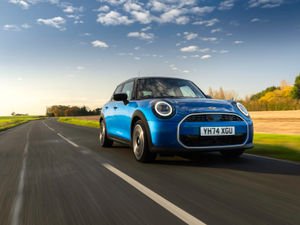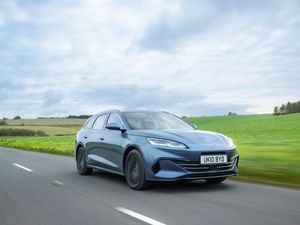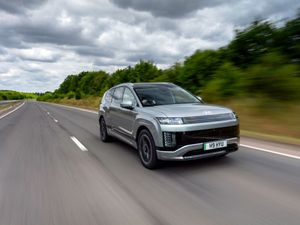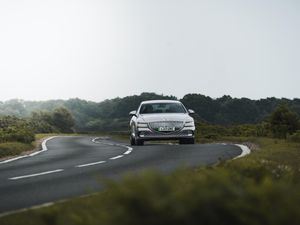First Drive: The Renault Captur E-Tech brings plug-in hybrid power to this best-selling crossover
Renault is introducing a new PHEV version onto its latest Captur, but where does this new PHEV slot into the range? Ted Welford finds out.
What is it?

Look at a Renault dealer, and no longer will it be the popular Clio dominating the forecourt, but rather the Captur crossover instead. Now the firm’s best-seller in the UK, this was the right car at the right time for Renault when it debuted in 2013.But despite its sales success, it wasn’t all that great, with a cheap interior and disappointing driving experience letting the side down.
That’s something the firm has sorted with a new second-generation, which arrived earlier this year with standard petrol and diesel engines. And now there’s a new E-Tech plug-in hybrid option for buyers to choose as well, but should it be on your shortlist?
What’s new?

It’s taken some time for Renault to extend its electrified focus outside of EVs, but with the introduction of E-Tech onto three of its best-sellers – the Clio, Captur and Megane – it’s quickly venturing into the ever-popular hybrid world.Unlike the Clio that uses a ‘self-charging’ setup, the Captur’s one is a plug-in powertrain, which makes use of a larger battery enabling 30 miles of electric range – allowing for some impressively low emissions and fuel consumption figures.
Borrowing tech and expertise from Renault’s F1 team, the Captur’s powertrain is clever and innovative, and far more than just electrifying an existing engine.
What’s under the bonnet?

The E-Tech uses a new naturally-aspirated 1.6-litre petrol unit, which comes mated to two electric motors and a 9.8kWh battery pack. It also uses a new clutchless automatic gearbox, which is smooth and better than most of the CVTs used in other hybrid crossovers.In total it produces 158bhp and 394Nm of torque – allowing for a 0-60mph time of 9.9 seconds and a top speed of 107mph. While it offers a decent amount of punch, the E-Tech never feels all that quick – in fact it’s a second slower to 60mph than the 1.3-litre petrol version with similar power, due to the extra weight of the batteries.
But it fares better when it comes to running costs, thanks to its 188.3mpg fuel economy figure and CO2 emissions of 34g/km. Company car drivers will also love its benefit-in-kind percentage of 10 per cent.
What’s it like to drive?
Drive the Captur E-Tech leisurely and you’ll enjoy the impressive refinement that comes from the electricity, along with the light steering that makes manoeuvring and parking an absolute doddle. The switch from electricity to petrol is also largely smooth, and the powertrain itself is relatively refined – only harsh accelerating proves a bit vocal.
But it’s not without its annoyances. Especially given the Captur’s likely to be an urban car, the low-speed ride is quite poor, feeling crashy and unsettled, likely not helped by the large 18-inch wheels on our test car. It’s far from uncomfortable, but it’s certainly not as good as the regular Captur.
With the gearbox in ‘B’ mode that allows for enhanced regenerative braking, we also found the brakes to feel a bit sticky, making it hard to come to a smooth stop, while any hints of enthusiastic driving and the car quickly struggles for grip.
How does it look?

For all its weaknesses, one area where the original Captur excelled was when it came to looks. And while Renault hasn’t changed the formula dramatically on this latest model, it looks even better now. From the bold colour selection to the fancy C-shaped LED lights, this is a fantastic-looking car in our eyes.There’s not too much to separate the hybrid model apart from its petrol and diesel counterparts, but look closely and you’ll spot the E-Tech badging, along with the charging flap on the left-hand side of the car. Launch Edition versions also come with a blue colour pack – adding subtle detailing to the front bumper, wing and C-pillar.
What’s it like inside?

The interior of the previous Captur was its weakest link, but all of this has been remedied on this new generation. The quality throughout is excellent, while the central ‘floating console’ in the middle with a chunky but low gear selector has a really Audi-like feel to it.It also comes with a brilliant portrait 9.3-inch media screen as standard, though it does resemble a tablet glued onto the dash. All E-Tech versions also benefit from a 10-inch digital instrument cluster.
As with most hybrid models, practicality has taken a hit, if not a huge one. Boot space reduces from 422 to 379 litres. You still get a flat loading area, but it’s the space underneath the flat floor that’s impacted by the battery.
What’s the spec like?

There are just two trims to pick from with the Captur E-Tech – S Edition and a new Launch Edition grade. It’s certainly not short of standard kit, with highlights including LED headlights, a reversing camera, 17-inch alloy wheels and the aforementioned media screen and digital dials. Launch Edition models are then treated to blue styling accents and larger 18-inch alloy wheels. All versions also come with a free wall box installation at your home.But it comes at a price, with the Captur E-Tech starting from £30,495, which is a lot of money for a compact crossover. Granted, it costs similar to the Kia Niro Plug-in Hybrid and Mini Countryman PHEV, but at £5,000 more than a petrol Captur with similar power and in the same spec, you really need to make the most of the electric driving to achieve some real savings.
Verdict
Whenever a cleaner more efficient powertrain option is introduced, it’s a move that’s always appreciated – not least by company car drivers. And with the Captur E-Tech’s low running costs, along with its striking design and excellent interior, it’s definitely a convincing option if you want a plug-in hybrid crossover.
However, for all its strengths, there is the issue of price. Unless you’re really sold on the idea of a hybrid and can do nearly all your driving without using the petrol engine, you could be better off choosing a standard petrol or diesel Captur instead, or even looking at Renault’s own Zoe EV.





